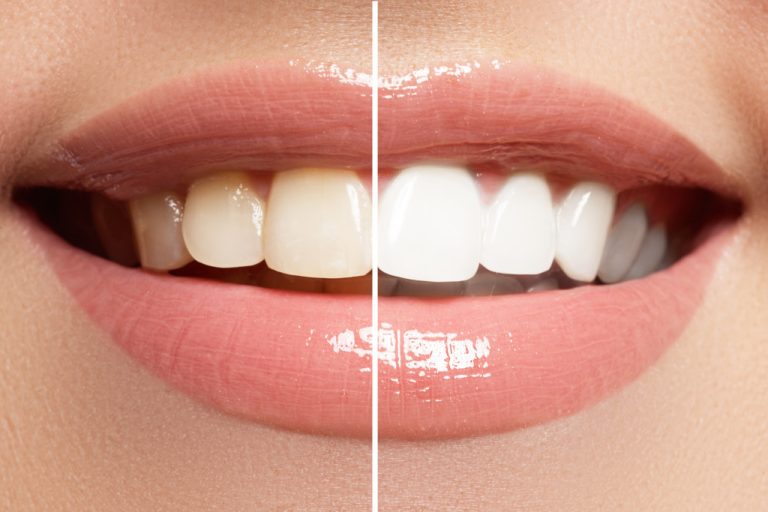Young people today are willing to do whatever it takes to look good. Social media has played a huge role in shaping modern trends, whether in fashion, skincare, diet fads, or health. Even the world of oral care is not an exception. In TikTok, users obsess over picture-perfect smiles while some have crossed the line by trying out dangerous methods for the cosmetic improvement of their teeth.
There are plenty of factors why people are so fixated on perfect teeth. According to Oral B, a white smile increases a person’s employability by 10%. For women, white and perfectly-spaced teeth are a sign of fertility, which enhances their appearance and appeal to potential mates. It also makes people look athletic by creating a positive perception of a person’s fitness level.
The power hold of a perfect smile on first impressions has driven people to rely on cosmetic procedures and complex dental procedures. Some have to wear braces to straighten teeth, while others undergo oral surgery for stable and long-lasting solutions for their teeth problems. Whether you have tried them or not, dental procedures can be costly. That’s why it’s not surprising why people rely on at-home procedures to save costs and experience faster results. One example is tooth-whitening products that are increasingly popular among young people.
Although most tooth-whitening kits are proven effective, experts warn that over-the-counter dental products come with risks. If you’re searching for tooth-whitening options in the market, it’s important to know the safety and potential dangers of using tooth-whitening regimens. With that in mind, we’ll shed light on the risks involved when using home-based products for tooth whitening.
Gum irritation

Carbamide peroxide and hydrogen peroxide are two active substances often found in tooth-whitening products. They also contain high amounts of bleaching ingredients that make these products extremely effective. The problem comes in when the bleaching agent touches the gums, causing irritation.
When it comes to clinical procedures, dentists use treatments approved by dental experts and professional associations. They apply the product with extra caution to protect the gum tissue. They also use protective gels to prevent the gums from coming into contact with the bleaching agent.
Most at-home tooth-whitening kits come with customizable trays to fit the teeth and protect the gums. Still, some people aren’t aware of the risk of gum irritation with tooth whitening. So if you don’t know the proper application, you’re increasing the risk of gum irritation.
Tooth sensitivity
Tooth sensitivity is another side effect of tooth-whitening products. In fact, tooth sensitivity is quite common for people using tooth-whitening products.
According to the American Dental Association, tooth sensitivity happens when the dental pulp gets exposed to hydrogen peroxide during treatment, leading to inflammation. It also occurs when you put too much product on the teeth, causing them to be more sensitive to hot and cold temperatures. This explains why people using tooth-whitening products feel discomfort when eating certain food or beverage. Other factors affect the severity of tooth sensitivity, such as intensity of use, dental restorations, and peroxide concentration.
Although sensitivity can heal on its own, you can resort to other solutions to speed up recovery. You can try toothpaste for sensitive teeth, wear dental trays or strips, and apply a dentist-approved fluoride agent to remineralize teeth. More importantly, make sure to stop the whitening treatment from helping the teeth to rest and adapt.
Dental restoration damage
A few studies released that tooth-whitening products harm dental restorations. The side effects may depend on which type of product or material used. The presence of hydrogen peroxide in whitening products speeds up the amount of mercury taken from the dental amalgam, which depends on the peroxide concentration applied, application time, and age of restoration. Also, peroxide damages the protein in your tooth’s dental layer, the hard tissue located beneath the surface of the tooth enamel.
Meanwhile, the materials used for implants and crowns have the strongest resistance against peroxide.
If you have gone through previous dental restorations and plan to use whitening treatments, it’s best to consult a dentist first to know the right approach.
Nothing enhances self-confidence like a picture-perfect smile. With so many threats to oral health, it’s important to look for ways to keep our teeth and gums healthy. With that in mind, the best way to protect our dental health is to rely on dental experts. Resorting to at-home applications without the recommendation of our dentists can do more harm than good. We understand dental consultations can be costly, but keep in mind that using faulty products on your teeth can lead to even bigger medical expenses.

